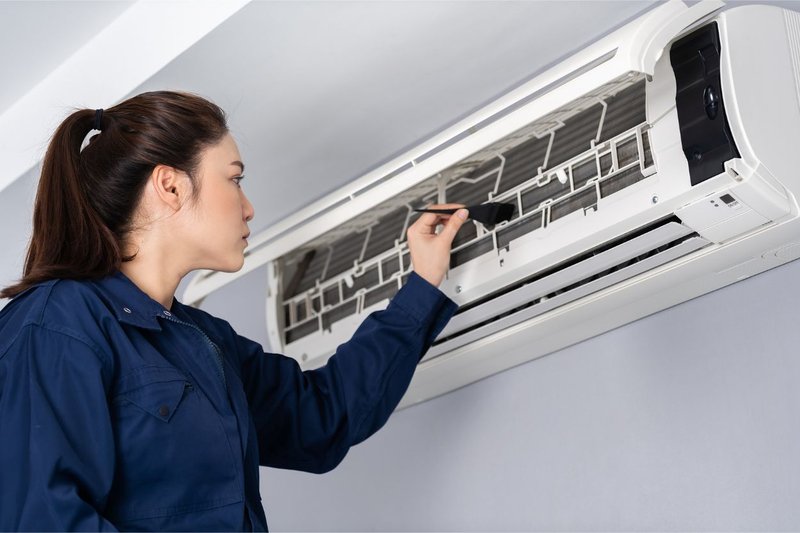
Now, you might be thinking, “It’s just an error code; it can’t be that serious, right?” Even though the E3 code might not seem like a big deal at first, it often signals a malfunction in the air conditioner’s fan. The fan is a crucial component that helps circulate air through the unit. Picture it as the heart of your air conditioner; without it, the AC can’t effectively cool your home. So, leaving Error E3 unchecked is like hanging a “Do Not Disturb” sign on a problem that, if allowed to persist, could lead to reduced efficiency, higher energy bills, and ultimately, a less-than-comfortable living environment.
Understanding Error E3 in GE Air Conditioners
Let’s dive a little deeper into what Error E3 really means for your GE air conditioner. In simple terms, this error usually indicates an issue with the unit’s fan. The fan works diligently to circulate air over the evaporator coils inside the AC. These coils, in turn, cool the air before it’s pushed out into your room. If your air conditioner were a symphony, the fan would be the conductor, ensuring every note (or in this case, every cool breeze) reaches where it’s supposed to.
When Error E3 flashes, it’s often due to the fan not working as it should. Imagine trying to cool down on a scorching day and finding your fan is just spinning weakly, or worse, not at all. A faulty fan can lead to other internal components overheating. This is like running a car with no coolant; eventually, it will overheat, and you might be looking at some major repairs. The same goes for your air conditioner.
Taking action sooner rather than later can save you a ton of headache and cash. Luckily, understanding this error gives you a head start in keeping your cooling system in top shape. So, what’s next? You’ll want to identify the root cause. Think of it as detective work—peeking into the innards of your AC to find what’s up with the fan.
Potential Causes of Error E3
So, what could be causing Error E3 to appear on your GE air conditioner? The causes can range from simple to more complex, but don’t worry; we’ll break them down. Sometimes, the problem could be as straightforward as a dirty fan. Picture a dusty bookshelf; over time, dust bunnies gather and hinder the look and utility of your shelf. The same can happen to your air conditioner’s fan. Dust, dirt, and debris can build up and prevent the fan from spinning freely or at its optimal speed.
Alternatively, the issue might stem from a faulty fan motor. Imagine the motor as the driving force behind the fan blades. If the motor is worn out or defective, it can’t spin the fan properly. This is like a car with a broken engine; no matter how much you press the gas, it just won’t go! Additionally, wiring issues or a bad connection within the unit can also lead to Error E3. Loose or damaged wires mean the electricity isn’t reaching the fan efficiently, like trying to drink through a straw with a hole in it.
Understanding these potential causes is crucial for addressing the error. Once you’ve got a handle on the problem, you can take informed steps to fix it. Ignoring the issue, however, could worsen the situation over time, potentially escalating to more severe failures within the air conditioner.
Consequences of Not Fixing Error E3
So, what happens if you decide to ignore that flashing E3 error code? You might think, “Out of sight, out of mind,” but unfortunately, that’s not how air conditioners work. If left unchecked, the consequences can compound over time. First and foremost, your air conditioner might not cool your room effectively. It’s like trying to bake a cake in an oven that never gets hot enough; you’re left with a half-baked, unsatisfying result.
Furthermore, ignoring the problem can lead to increased energy consumption. The AC unit will have to work harder to achieve the same level of cooling, much like swimming upstream. This means higher electricity bills for you, which is nobody’s idea of a fun surprise in the mail!
Lastly, neglecting Error E3 could cause long-term damage to other parts of the air conditioner. It’s a bit like ignoring a leaky roof; the longer it goes unfixed, the more damage moisture does to the structure of your house. You could end up needing extensive repairs or even a complete system replacement—something that can be costly.
Next Steps and Solutions
Alright, you’re convinced it’s time to address Error E3. What should you do? Before anything else, consider consulting the user manual for your GE air conditioner. It’s a treasure trove of specific information for your model. It’s like having the instruction booklet to your favorite complicated puzzle—or in this case, your AC.
Next, if you feel comfortable, you can try some basic troubleshooting. Start by unplugging the unit and inspecting the fan. Is it clogged with dirt or debris? Cleaning it might just solve the problem, much like giving your clogged vacuum cleaner a good clearing. Also, check for any obvious signs of wiring issues or loose connections.
If these steps don’t resolve the error, it might be time to call in a professional. An HVAC technician can perform a detailed diagnosis and repair any faults. Think of them as your air conditioning doctors, equipped with the right tools and expertise to get it running smoothly again.
In conclusion, addressing Error E3 might seem daunting at first, but it’s a crucial step in maintaining the efficiency and longevity of your GE air conditioner. Regular maintenance and a little attention to the unit’s needs will keep your home cool and your energy bills down. Prevention is always better than cure, so don’t shy away from tackling problems head-on!